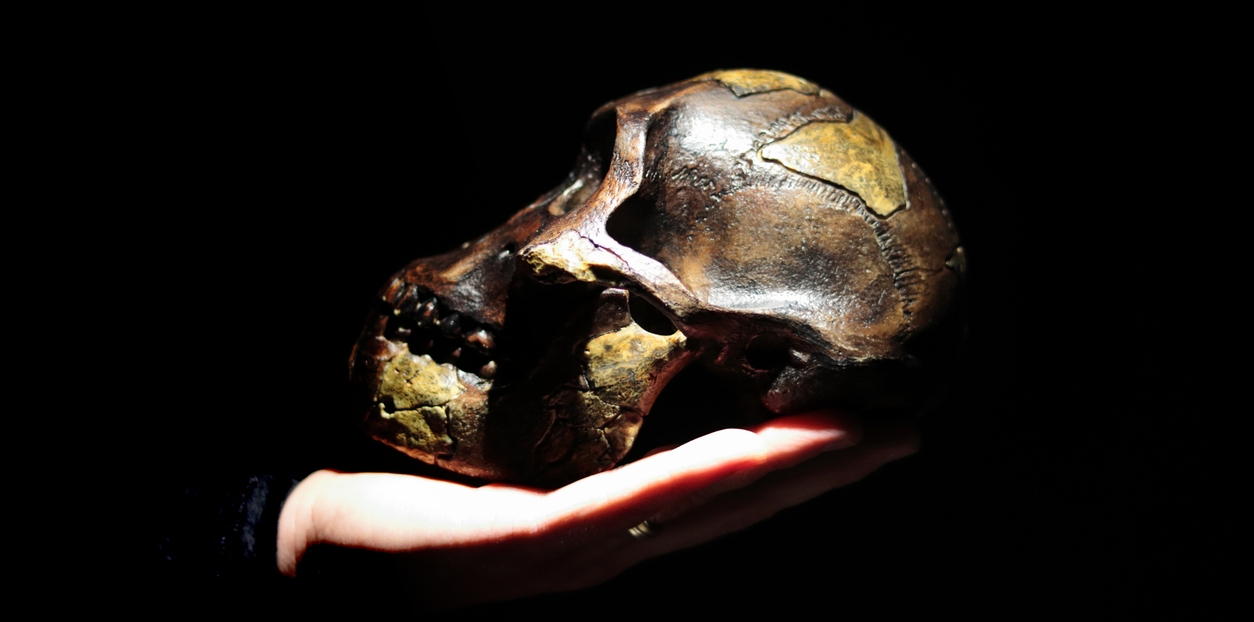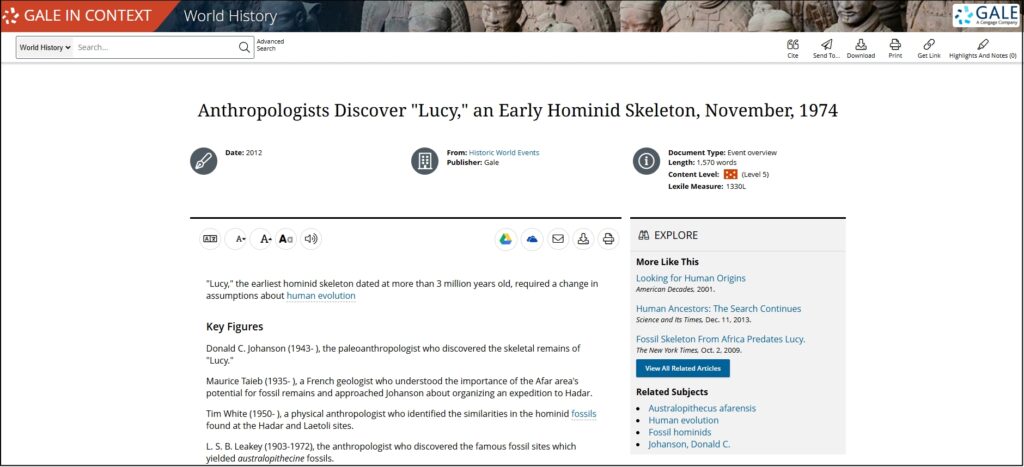| By J. Robert Parks |
Unless scientists change the course of history (Galileo, Albert Einstein) or are fortunate to have a discovery that gets named after them (Werner Heisenberg, Daniel Bernoulli), few of them become household names. So it’s not surprising that even highly educated people might not have a clue who Donald C. Johanson is, but his discovery of a hominid skeleton fifty years ago this week, on November 24, 1974, is one of the most important finds ever made in paleoanthropology. Librarians and educators who want to help students understand the course of scientific history and, especially, how evidence leads to new hypotheses, will find a wealth of resources in Gale In Context: World History.
The hominid skeleton “Lucy,” named after the Beatles’ song “Lucy in the Sky with Diamonds,” was discovered at a site in Ethiopia, changing how scientists understood human evolution. Lucy was significant because it wasn’t just a skull or jawbone, but a nearly half-complete skeleton that belonged to one individual. More importantly, the bones were different from other fossils that had been found, indicating a new species. It was named Australopithecus afarensis.
It’s commonly misunderstood that Charles Darwin argued that humans evolved from apes. Instead, he believed that people and apes evolved separately from a common ancestor. In his book The Descent of Man, he wrote that because gorillas and chimpanzees are only found in Africa, it was likely that humanity’s evolutionary ancestor would have also lived there. Even though hominid archaeological finds have been made in Europe and Asia, many paleoanthropologists such as Johanson and the Leakey family have focused their efforts on Africa.
Although paleoanthropologists believe that our ancient ancestors originated in Africa, they disagree on how those hominids evolved, as well as how they migrated around the world. Of course, not everyone accepts even the premise of human evolution, as there’s still a debate between evolutionists and creationists, with some creationists arguing on scientific grounds and others on religious grounds. Nonetheless, evolution is almost universally accepted by biologists and has gained wide acceptance among the general populace.
Lucy’s discovery upended a number of assumptions that scientists had made up to that point. For example, although her skull indicated that she had a small brain, she walked upright. This challenged the notion that a certain brain size was required to walk on two feet. Scientists also had to rethink their earlier belief that hominids started walking upright to be able to use tools.
There have been numerous finds since Johanson’s discovery fifty years ago, and they too have forced scientists to rethink their assumptions. In 2002, two different skulls were discovered, one in the country of Georgia and one in Chad. The former challenged the understanding of how hominids migrated to Europe, while the latter was said to “illuminate the earliest chapter in human evolutionary history.”
In the twenty years since, new techniques in microscopic analysis have shed light on Lucy and what she and other members of the Australopithecus afarensis species might have eaten. Other fossil remains have led to a debate over how much they would have climbed in trees or whether they mostly remained on the ground.
In 2015, a new but closely related species to Australopithecus afarensis was announced. It was given the name Australopithecus deyiremeda, and researchers believed the two species lived at the same time and in the same place. Other scientists, however, have been slow to embrace those conclusions, given that they are only based on partial jawbones. Some paleoanthropologists have argued that the new fossils are simply variations of Australopithecus afarensis rather than a completely new species.
This, of course, is how science works. Hypotheses are made, evidence is collected, and that data either confirms, refutes, or alters those hypotheses and leads to new ones. Paleoanthropology is one of the more challenging sciences in that regard, since the evidence largely depends on discovering new fossils. When one is found, however, as Lucy was fifty years ago, it has the potential to change how we think about how we came to be.
About the Author
J. Robert Parks is a former professor and frequent contributor to Gale In Context: U.S. History and Gale In Context: World History who enjoys thinking about how our understanding of history affects and reflects contemporary culture.



